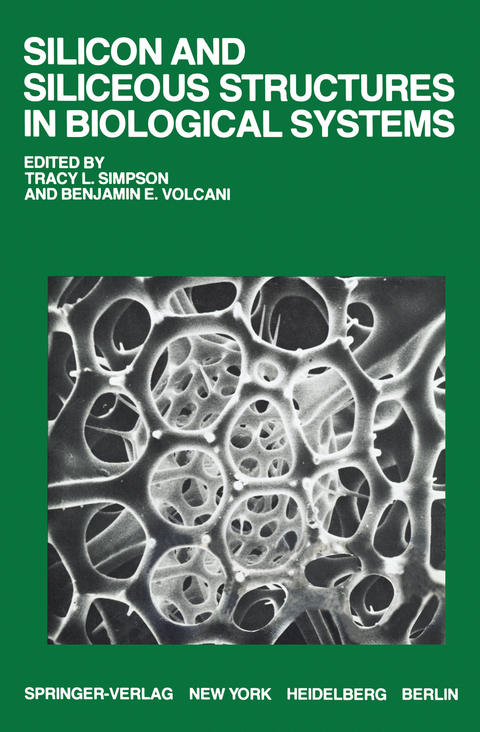
Silicon and Siliceous Structures in Biological Systems
Springer-Verlag New York Inc.
978-1-4612-5946-6 (ISBN)
Section I. Physiological Aspects of Silicon.- 2. Silicon in the Cellular Metabolism of Diatoms.- 3. Germanium-Silicon Interactions in Biological Systems.- 4. Silicon in Bone Formation.- Section II. Siliceous Structures: Distribution, Deposition, Ultrastructure, Morphogenesis.- Algal Groups.- 5. Morphology and Phyletic Relationships of the Silicified Algae and the Archetypal Diatom—Monophyly or Polyphyly.- 6. The Siliceous Components of the Diatom Cell Wall and Their Morphological Variation.- 7. Cell Wall Formation in Diatoms: Morphogenesis and Biochemistry.- 8. Ultrastructure and Deposition of Silica in the Chrysophyceae.- Protozoa.- 9. Distribution and Forms of Siliceous Structures Among Protozoa.- 10. Ultrastructure and Deposition of Silica in Rhizopod Amebae.- 11. Ultrastructure and Deposition of Silica in Loricate Choanoflagellates.- 12. Evolution and Diversity of Form in Radiolaria.- 13. Radiolarian Fine Structure and Silica Deposition.- Higher Plants.- 14. Ultrastructure of Silica Deposits in Higher Plants.- 15. Silica in Shoots of Higher Plants.- Sponges.- 16. Form and Distribution of Silica in Sponges.- 17. Ultrastructure and Deposition of Silica in Sponges.- 18. Effects of Germanium on Silica Deposition in Sponges.
| Zusatzinfo | 587 p. |
|---|---|
| Verlagsort | New York, NY |
| Sprache | englisch |
| Maße | 155 x 235 mm |
| Themenwelt | Naturwissenschaften ► Biologie ► Biochemie |
| Naturwissenschaften ► Biologie ► Genetik / Molekularbiologie | |
| Naturwissenschaften ► Biologie ► Mikrobiologie / Immunologie | |
| Naturwissenschaften ► Biologie ► Zellbiologie | |
| Schlagworte | Silicon • Silicone • Siliziumdioxid |
| ISBN-10 | 1-4612-5946-0 / 1461259460 |
| ISBN-13 | 978-1-4612-5946-6 / 9781461259466 |
| Zustand | Neuware |
| Haben Sie eine Frage zum Produkt? |
aus dem Bereich


